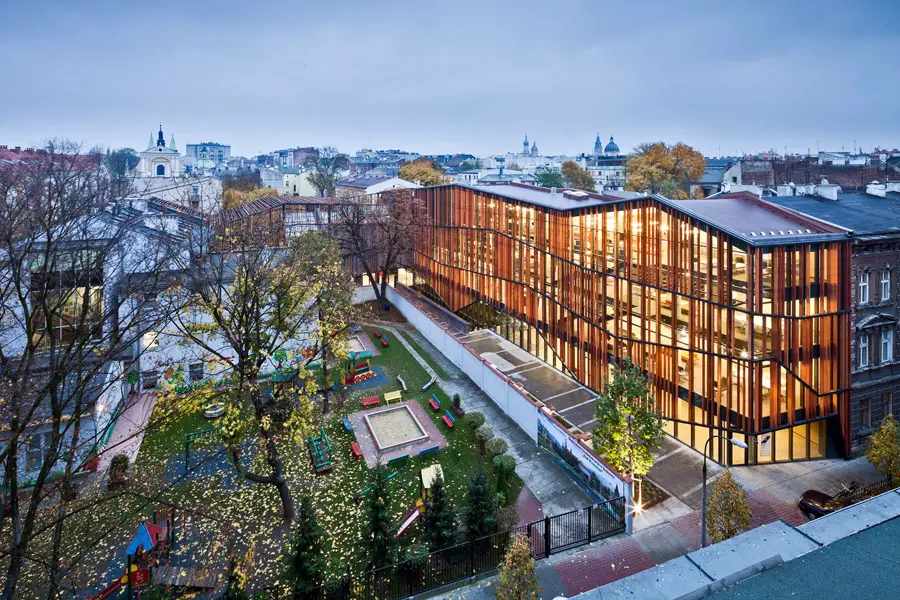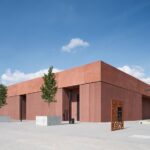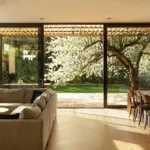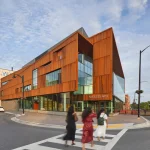Małopolska Garden of Arts Krakow Building, Polish Architecture Images, Architect
Małopolska Garden of Arts, Poland : Krakow Building
Contemporary Krakow Development design by Ingarden & Ewy Architekci, Poland
26 Mar 2013
Design: Ingarden & Ewy Architekci, Poland
Małopolska Garden of Arts
The “Architizer A+ Popular Choice Award” for the Małopolska Garden of Arts, designed by Ingarden & Ewý Architects.
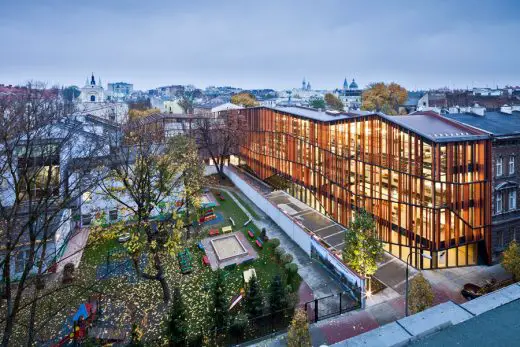
photograph © Marcin Czechowicz
Małopolska Garden of Arts Krakow
The Małopolska Garden of Arts (MGA) has recently won the “Architizer A+ Popular Choice Award” in an open Internet vote for the best project at the American architecture portal Architizer.com, in the Theatres and Performing Art Centers category.
Currently, Architizer is the largest and quickest developing portal devoted to architecture. Several hundred designs from over a hundred countries were presented at the competition. In the first stage of the competition the Jury of professionals, including architects: Steven Holl and Jeanne Gang, designers: Rem D. Koolhaas and Eckart Maisse, curators: Barry Bergdoll and Paola Antonelli (MOMA), as well as other experts, short-listed 5 projects in 52 categories.
In its category, the Małopolska Garden of Arts competed with Dalian Conference Centre, China (COOP Himmelblau), LCT3 Theatre at the Lincoln Center, New York ( H3 Hardy Collaboration), Roberto Cantoral Concert Hall in Coyoacan, Mexico (Broissin Architects) and Yurihonjo City Cultural Center in Akita, Japan (Chiaki Arai). The second stage was a popular vote involving around 150,000 Internet users. Two other Polish projects competed in other categories – the Keret House (Jakub Szczęsny of Centrala) which qualified to the finals in the Architecture + Living Small category and Maya’s House (Ultra Architects) which won a special mention in the Landscape + Gardens category.
The prize for MGA will be awarded at a special gala to be held on 6 May at Cedar Lake Studio, New York, during the NYCxDESIGN Festival. The event will host luminaries from the fields of architecture, design, the press and related professions.
From the very beginning, the Małopolska Garden of Arts, which opened in Kraków in autumn 2012, has attracted the interest of experts in architecture, and the public at large. Its innovative idea and programme has already earned MGA a prominent place on the cultural map of the Małopolska Region. In 2012, it was awarded the Professor Janusz Bogdanowski Prize for Kraków’s best architectural project – a model example of critical contextualism, both as regards its architectural form and detail. At the beginning of 2013, it won the “Building of the Year 2012” Award of the Internet architecture service ArchDaily. In March 2013, MGA earned Ingarden & Ewý the title of the Construction Company of the Year in the Architects category.
From 1948 until very recently the building at 12 Rajska Street facing the Voivodeship Public Library in Kraków had housed the workshops of the Juliusz Słowacki Theatre and the Stary Theatre. Ingarden & Ewý Architects, whose concept won a competition organised by the Słowacki Theatre and the Union of Polish Architects (SARP), created a spectacular structure which blends together history with modernity. A fragment of a re-created 19th-century wall which was once on the site of today’s MGA, can be seen behind its glass facade. The original bricks, which were cleaned for this purpose, were used to reconstruct the wall.
The designers have set MGA in the context of its architectural environment, with its roof in line with the roofing of the neighboring building. The new structure merged with the space of the street whilst at the same time enhancing its quality. MGA now works for two institutions: the Juliusz Slowacki Theatre and the Voivodeship Public Library. It houses a modern mediatheque and an artotheque: a multimedia collection of books, music recordings and films. MGA contains a multifunctional hall of around 300 seats, a screening room for 80 and a few conference rooms. Thanks to its architecture and interior design, MGA is a perfect venue for multidisciplinary art projects.
www.iea.com.pl
20 Nov 2012
Małopolska Garden of Arts Krakow News
Design: Ingarden & Ewy Architekci, Poland
Małopolska Garden of Arts Building
Design of the Małopolska Garden of Arts –
awarded the 2012 Professor Janusz Bogdanowski Prize for best architecture in Kraków
The building of the Małopolska Garden of Arts (MGA) has been realized according to a competition-winning design by Ingarden & Ewy Architects. The program and the initiative of establishing this new cultural institution in Kraków was proposed in the year 2004, by Krzysztof Orzechowski, Director of the Juliusz Słowacki Theatre and Janusz Sepioł, at the time the Marshal of the Małopolska Voivodeship. It is no coincidence that the building was raised in the vicinity of ul. Karmelicka – a street popular with students and locals alike – opposite the building of the public library, with the aim of ensuring its smooth inclusion into the “bloodstream” of the city.

photograph © Krzysztof Ingarden
The building of MGA introduced new spatial order to the old backyards and ruined buildings in Rajska and Szujskiego streets in Krakow. The starting point was a multifunctional hall, which was entered into the outline of the old, 19th-century horse-riding arena, used in the last years of its history as workshops and storage space for the Juliusz Słowacki Theatre in Kraków.
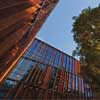

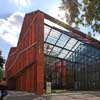
photographs © Krzysztof Ingarden
The Małopolska Garden of Arts is a cross between two institutions: the Juliusz Słowacki Theatre and the Malopolska Voivodeship Library. The wing on Szujskiego Street holds a modern art and media library, with multimedia books and music, while the section standing on ul. Rajska has been developed by the theatre, and is equipped with a multifunctional events hall.
The new hall – operating, as a studio theatre, conference room, concert hall, and venue for banquets and exhibitions – holds retractable stages for 300 people. State-of-the-art stage technology is present overhead: fixed on hoists and cranes to the steel ceiling girders. This allows dramas and concerts to be performed, and exhibitions, film screenings, symposiums, conferences, art auctions, fashion shows, and many more events to be held. Altogether, the space of about 4300 sq.m houses a theatre together with a cosy cinema with 98 seats, a café, and premises for the organisation of educational, art-related activities.
Honing the form, the architects focused on interaction with the future recipients, which is why the entire spatial form of the symbolic, openwork roofing raised over the garden from the side of Rajska Street – though not functioning as an actual roof – is there to transport the gateway to the stage out onto the street. In this way, the building delicately nudges passers-by with the skilful manipulation of the form, already at first glance giving the onlooker the impression of going beyond the borders of a garden, where culture is grown in evenly planted rows.
Further proof of the sophisticated play with the space is the garden itself. Imitating flower beds, the equal bands with low greens are a metaphor of a garden: as much as the architects could afford here. A notable fact is that historically “ulica Rajska” – literally “Paradise Street” – led to the Garden of Paradise, which was later replaced by the developments of the Tobacco Works.
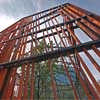

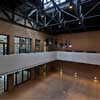

photographs © Krzysztof Ingarden
Architect Krzysztof Ingarden (collaborating with Jacek Ewý), claims that the form of the building is a contextual game between “mimesis and the abstraction”. In practice, this means that the building is by no means a simulacrum of the context, but rather draws inspiration from the code of contextual forms by making references to the geometry of the roofs and tissue of the neighbouring structures applied for the abstract geometrical compositions of the façades. The building fits the scale of its environment perfectly by maintaining the lines of the roof and divisions of the façades in line with the composition and linear solutions of the neighbouring buildings.
The final impact is the result of the designers’ sensitivity to signals coming from the environment. For example, the opening in the perforated roof of the garden was formed, especially for the maple tree that grows there. In recognition of its exquisite sense of spatial composition and creative form in historical context, the building was awarded with the Professor Janusz Bogdanowski Prize, for the best architectural achievement in Krakow in the year 2012.
In this place, the cultural life of the Kraków’s young artistic set will blossom under a shared roof. Modern ballet, contemporary theatre forms, audio and video arts, concerts, and all and any other artistic pursuits will find their home here.
Together with the technical furnishing of the stage, the construction project consumed approximately PLN 47 million, and was co-financed from EU funds as a part of the Małopolska Regional Operational Programme 2007–13.
Krzysztof Ingarden
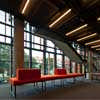

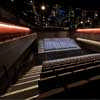
photographs © Krzysztof Ingarden
Ingarden & Ewy Architects
Almost from the beginning of their operation – i.e. in fact from the time of the construction of the Manggha Museum (1994), the first major project in collaboration with Arata Isozaki – Ingarden & Ewý Architects, the architectural studio run by Krzysztof Ingarden and Jacek Ewý, began to turn out projects which enjoyed general recognition and acclaim: their number includes the Wyspiański 2000 Pavilion on Wszystkich Świętych Square in Kraków, the Polish Pavilion at Expo 2005 in Nagoya, Japan, Polish Embassy in Tokyo, Japan, the parish church on ul. Ludźmierska in Kraków’s district of Nowa Huta, the Library of the Pontifical University of Theology in Krakow, the office block at the intersection of Lublańska and Bora Komorowskiego streets in Krakow, and – most recently – the Krakow Congress Centre (ICE), currently being built next to the Grunwaldzki Bridge in Krakow.
On the design of Małopolska Garden of Arts:
Dawid Hajok, journalist:
“Although the official opening does not take place until 19th October, it has already been nicknamed the Kraków Pompidou Centre. Małopolska Garden of Art intrigues with its architecture, inscribed perfectly in the ancient city of Kraków surrounding it.”
(Gazeta Wyborcza w Krakowie regional supplement to national daily, 14th September 2012).
Janusz Sepioł, Senator, Marshal of Małopolska Region in 2002–2006: “The building is a pure emanation of the Gesamtkunstwerk concept.”
(Gazeta Wyborcza national daily 14th September, 2012);
“Although inscribed in the stereometry of this part of the city, the building is ostentatiously different. The texture, the colour, the relationship with the street, the articulation of the façade, whose division into storeys is blurred, and which is not just a wall with openings cut out for window, yet is no curtain either – all these are decisive for its singularity. Even though the connection with the legacy of the space is sensed strongly – an existing tree, a brick front wall – what we enter at the same time is a new, unconventional space, where the roof seems to be the same construction and tissue as the external walls. Some say – or at least this is what Bruno Zevi claims – that architecture is the art of space. What moves one in this building is its extraordinary, unexpected perspectives: vistas many metres long.”
(Małopolski Ogród Sztuki, a publication by the Juliusz Słowacki Theatre in Kraków, in print).
Krzysztof Orzechowski, Director of the Juliusz Słowacki Theatre in Kraków: “I devoted eight years to the Małopolska Garden of Art. First to the idea, then to the construction. The world trends in architecture and art lay at the foundation of my concept. Today, one does not build a theatre for a theatre, a gallery for a gallery, a cinema for a cinema, but rather forms modern, multifunctional art centres, spaces teeming with life from morning till long into the night, open both for the public and the artists representing various fields of artistic creation, and also for experts dealing with the art and practice of exhibition and education. The latest yet already established fashions command that the individual arts be combined, synthesised.”
(Czym dla mnie jest Małopolski Ogród Sztuki? [lit.: What Małopolska Garden of Art means to me] in: Małopolski Ogród Sztuki, a publication by the Juliusz Słowacki Theatre in Kraków, in print).
Krzysztof Bień, architect, a member of the Professor Janusz Bogdanowski Prize: “Tactfulness and a feeling of the space, use of suitable construction materials, and respect for the surrounding architecture: all these have contributed to the ordering of the formerly bedraggled Rajska and Szujskiego streets, and enriched the legacy urban tissue. I express the hope, if not certainty, that this place will become another icon of Kraków.”
Laudatory speech on the occasion of the award of the 2012 Professor Janusz Bogdanowski Prize to Małopolska Garden of Art.
Małopolska Garden of Arts Krakow Building images / information from Ingarden & Ewy Architects
Location: Krakow, Poland, eastern Europe
Krakow Buildings
Contemporary Krakow Architecture
TechnipFMC Office, Krakow, southern Poland
Architecture: The Design Group
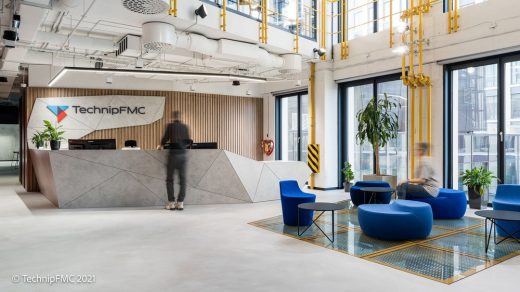
photo : The Design Group, Fotomohito
TechnipFMC Office, Krakow
PURO Hotel, Halicka Street, Kazimierz
Architects: Conran and Partners
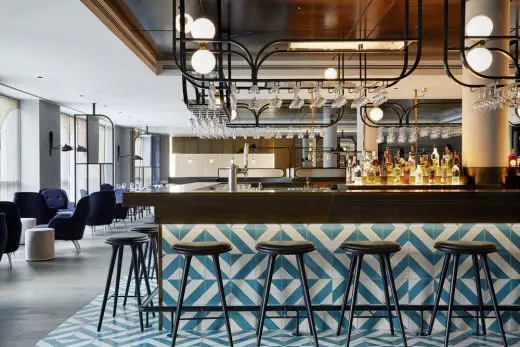
photography © Anna Stathaki
New Hotel Building in Krakow
New Visma Software office, Krakow, southern Poland
Architecture: The Design Group
Visma Software Office Krakow
Krakow Pavilion
Ingarden & Ewy Architekci
Krakow Building
New Polish Architecture
New Polish Architecture
Polish Architecture Designs – chronological list
Polish Architect Offices
Polish Architecture Walking Tours
Autofamily House
KWK PROMES Robert Konieczny
Autofamily House
Baltyk Tower, Poznań
MVRDV
Baltyk Tower Poznań
Ingarden & Ewy Architects – Krakow based architectural practice
Comments / photos for the Małopolska Garden of Arts Krakow Architecture page welcome

